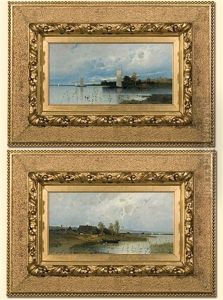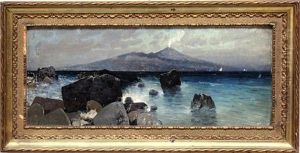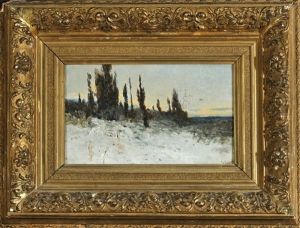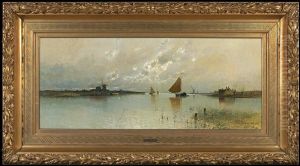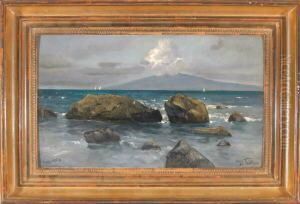Eduard Fischer Paintings
Eduard Fischer was a Czech painter and graphic artist, born on October 18, 1861, in Pilsen, which was then part of the Austro-Hungarian Empire and is now in the Czech Republic. Fischer's work is not widely known internationally, and confusion can sometimes arise with other individuals sharing similar names. It should be noted that there are several historical figures named Eduard Fischer, including a Swiss mycologist and a Czech chess player, so it's important to distinguish the painter.
Fischer studied at the Academy of Fine Arts in Prague under professors such as František Sequens. He often depicted historical and religious themes, which were popular during his time. His work was influenced by the prevalent artistic movements of his era, including Romanticism and later, Symbolism. However, he also touched upon Impressionism in some of his landscape or urban paintings.
Throughout his career, Fischer exhibited his works in various shows, including those held by the Künstlerhaus in Vienna and the Mánes Union of Fine Arts in Prague, which played significant roles in the art scenes of Austria and Bohemia respectively. His contributions to the art world during the late 19th and early 20th centuries were part of the broader cultural movements that shaped Central European art during a period marked by a mix of traditionalism and burgeoning modernist tendencies.
Despite his accomplishments, Eduard Fischer's name is not as well-remembered as some of his contemporaries. This can be attributed to a number of factors, including the regional focus of his career, the overshadowing impact of more revolutionary artists of his time, and the political upheavals that changed the cultural landscapes of Europe, particularly after World War I. He passed away on September 9, 1939, in Prague, just as World War II was beginning, which could have further obscured his legacy. Today, Fischer's works might be found in Czech art museums and galleries, contributing to the cultural heritage of the region.





